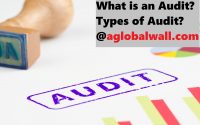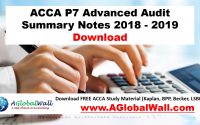Framework for Financial Reporting
Introduction
A Framework for Financial Reporting is a set of theoretical principles and concepts that underlie the preparation and presentation of financial statements. If no conceptual framework existed, then it is more likely that accounting standards would be produced on a haphazard basis as particular issues and circumstances arose. Framework for Financial Reporting helps in the preparation of standards.
These accounting standards might be inconsistent with one another, or perhaps even contradictory. A strong conceptual framework, therefore, means that there is a set of principles in place from which all future accounting standards draw. It also acts as a reference point for the prepares of financial statements if there is no adequate accounting standard governing the types of transactions that an entity enters into (this will be extremely rare).
Frameworks for Financial Reporting plays a very important role in the preparation of the financial statements which make them more useful to their user to make financial decisions.
Read this:
ACCA Mock Exams For December 2017
IFRS 2 share-based payments

The purpose of the Framework for Financial Reporting
The purpose of the Framework is:
(a) to assist the International Accounting Standards Board (the Board) when developing new standards.
(b) to help national standard setters develop new standards
(c) to provide guidance on issues not covered by IFRS Standards
(d) to assist auditors.
The Objective of Financial Reporting
The Framework says that the objective of financial reporting is to provide information to existing and potential investors, lenders and other creditors which helps them when making decisions about providing resources to the reporting entity.
Underlying Assumption
The Framework identifies going concern as the underlying assumption governing the preparation of financial statements. The going concern basis assumes that the entity will not liquidate or curtail the scale of its operations.
Qualitative characteristics of useful financial information
The Framework identifies types of information that are useful to the users of financial statements. It identifies two fundamental qualitative characteristics of useful financial information:
Information is relevant if it will impact decisions made by its users.
(1) Relevance
– Relevant information has predictive value or confirmatory value to a user
– Relevance is supported by materiality considerations:
– Information is regarded as material if its omission or misstatement could influence the decisions made by users of that information
– An omission or misstatement could be material due to its size or nature
– Materiality is an entity-specific consideration and so The framework does not specify a minimum threshold.
(2) Faithful representation
For financial information to be faithfully presented, it must be:
– complete
– neutral
– free from error.
Therefore, it must comprise information necessary for a proper understanding, it must be without bias or manipulation and clearly described. Framework for Financial Reporting.
In addition to the two fundamental qualitative characteristics, there are four enhancing qualitative characteristics of useful financial information. These should be maximised when possible:
(1) Comparability
Information is more useful if it can be compared with similar information about other entities, or even the same entity over different time periods. The consistency of presentation helps to achieve comparability of financial information. Permitting different accounting treatments for similar items is likely to reduce comparability.
(2) Verifiability
The Framework explains that verifiability means ‘that different, knowledgeable and independent observers could reach consensus, although not necessarily complete agreement, that a particular presentation of an item or items is a faithful representation’ (Framework, para QC26). Verifiability of financial information provides assurance to users regarding its credibility and reliability.
(3) Timeliness
Information should be made available to users within a timescale which is likely to influence their decisions. Older information is less useful.
(4) Understandability
Information should be presented clearly and concisely.
Prudence
Being prudent means exercising caution. In Corporate reporting, this is often interpreted as meaning that entities should not overstate their assets or understate their liabilities.
The Board removed prudence from the Framework because they thought it was inconsistent with neutrality. This is because reducing assets in one period is likely to lead to the over-statement of financial performance in the next period. However, as discussed later in this chapter, the Board are considering reintroducing into the Framework an explicit reference to prudence.
The cost constraint
It is important that the costs incurred in reporting financial information are justified by the benefits that the information brings to its users.
The elements of financial statements
The financial effects of a transaction can be grouped into broad classes, known as the elements. According to the Framework, there are five elements of financial statements:
Assets – resources controlled by an entity from a past event that will lead to a probable inflow of economic benefits.
Liabilities – obligations of an entity arising from a past event that will lead to a probable outflow of economic resources.
Equity – the residual net assets of an entity after deducting its liabilities.
Incomes – increases in economic benefits during the accounting period.
Expenses – decreases in economic benefits during the accounting period.
Recognition of the elements of financial statements
The Framework says that an item should be recognized in the financial statements if:
- it meets the definition of an element
- it is probable that future economic benefits will flow to or from the entity
- the item can be measured reliably.
Measurement of the elements of financial statements
Measurement is the process of determining the amount of which the elements should be recognized and carried at in the statement of financial position and the statement of profit or loss and other comprehensive income.
The Framework identifies four possible measurement bases:
Must Read: IAS 19 Employee Benefits Summary
Historical cost
Assets are recorded in the amount paid to acquire them.
Liabilities are recorded at the value of the proceeds received, or at the amount expected to be paid to satisfy the liability.
Current cost
Assets are carried at their current purchase price.
Liabilities are carried at the amount currently required to settle them.
Realisable value
Assets are carried at the amount that would be received at an orderly disposal.
Liabilities are carried at the amount to be paid to satisfy them in the normal course of business.
Present value
Assets are carried at the present value of the future cash flows that the item will generate.
Liabilities are carried at the present value of the future cash outflows required to settle them.






